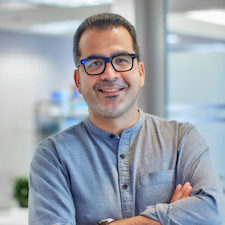
Research Director
SHARE
It is not unusual, during a crisis, to listen to a leader say or read an advertising slogan that appeals to unity in the face of adversity and insinuates that “we are all in the same boat.” Undeniably, collective effort is key, especially these days when staying home is the most effective way to control a virus that spreads extremely quickly and can be lethal. But let’s not fool ourselves. As numerous media outlets have reviewed during these past few months, not all of us experience “staying at home” in the same way, nor do we experience the collapse of the economy brought about by the decisions to control the pandemic the same way either.
This basic understanding is a key element of “Living with Risk”, an analytical lens that we are developing at the Center for a New Economy to understand the string of disastrous events that have plagued Puerto Rico during the past years — bankruptcy, hurricanes, earthquakes and a pandemic, to name the most obvious — and assess emergency responses, reconstruction and eventual post-disaster reconstruction. The guiding principle of this approach is simple: it is impossible to eliminate risk from our lives, so we must learn to live with it. However, it is not a call for complacency. On the contrary, we are interested in it leading us, all of us, to adopt a critical stance towards conventional attitudes about disasters and natural phenomena. Especially those views that try to explain misfortunes and their outcomes with vacuous ideas and phrases such as “we’re just unlucky” or “not much can be done, because it’s God’s will.”
Adopting a critical stance on how we live with risk inevitably leads us to talk about vulnerability; the relationship between risks and disasters is understood differently when we think of this dimension. Some events, natural or not, can put us at risk, but our level of vulnerability—our social, economic and political position in society—determines how we are affected by disasters. And this leads us to discuss other issues that some prefer to ignore: privilege, power and inequality, because, as evidenced by several studies, people and communities that lack resources, networks and opportunities are at greater risk than the privileged.
Over the past few weeks, numerous examples have surfaced of how the most vulnerable survive the spread of the coronavirus across the world. India’s case is particularly horrifying. When the Prime Minister decreed, without warning, that the entire country had to go under lockdown, it became apparent what novelist Arundhati Roy described as “a chemical experiment that suddenly illuminated hidden things.” While the middle classes and the more affluent settled in their residences, the urban poor had to leave their workplaces, where many resided temporarily, and set out on their way to their hometowns, on foot. This unleashed a massive migratory movement that reminded many of the exodus during the post-independence partition, which separated the current territories of Pakistan and Bangladesh from India. Along streets and roads, thousands walked up to hundreds of miles for several days. Some died on the way and others arrived to their villages unsure of how they would survive. Displaced migrants face dire scenarios: they are afraid of catching the virus, and now that they are unemployed, they also live in fear of starvation.
In the United States, perhaps diametrically opposite from India in socioeconomic terms, equally worrying trends have been observed. Despite the fact that the virus, in purely scientific terms, does not discriminate by skin color, infection rates and deaths have been much higher for African Americans than for whites in numerous locations. Earlier this month, the digital news outlet ProPublica reported that, in the cities and counties of Michigan and Louisiana with the highest concentration of blacks, there is a disproportionately higher number of cases and deaths from the virus. According to experts cited in the report, these patterns of contagion and death by COVID-19 are the consequence of decades of disinvestment in public health services in black communities, racial segregation and historical injustices toward minorities.
In Puerto Rico, the pandemic has condemned many people to lock themselves in with a deadly threat: violence from their partners. During the first month of the lockdown, the Puerto Rico Police Department reported 526 complaints of domestic violence. But, in a country where a femicide occurs every seven days, surely there is a great discrepancy between the official numbers and the reality of the victims. The situation has become so serious at a global level that the Secretary General of the United Nations asked the governments of the world to urgently address the problem of gender violence.
The list of difficulties faced by the most vulnerable during the pandemic is long. But, likewise, examples of effective community responses abound. In the municipality of Guánica, for example, a network of nonprofit organizations and community groups is making sure that residents of neighborhoods hit by the January earthquakes receive medical care during the pandemic. They are also administering tests to detect the coronavirus. What the government has been unable to do for the rest of the country, is taking place in a community in the south of Puerto Rico. This is another lesson we have learned: “living with risk” is not a prison sentence. It is also a call to take action, as numerous communities are doing right now by filling gaps left by the state, empowering themselves and holding the government accountable.
